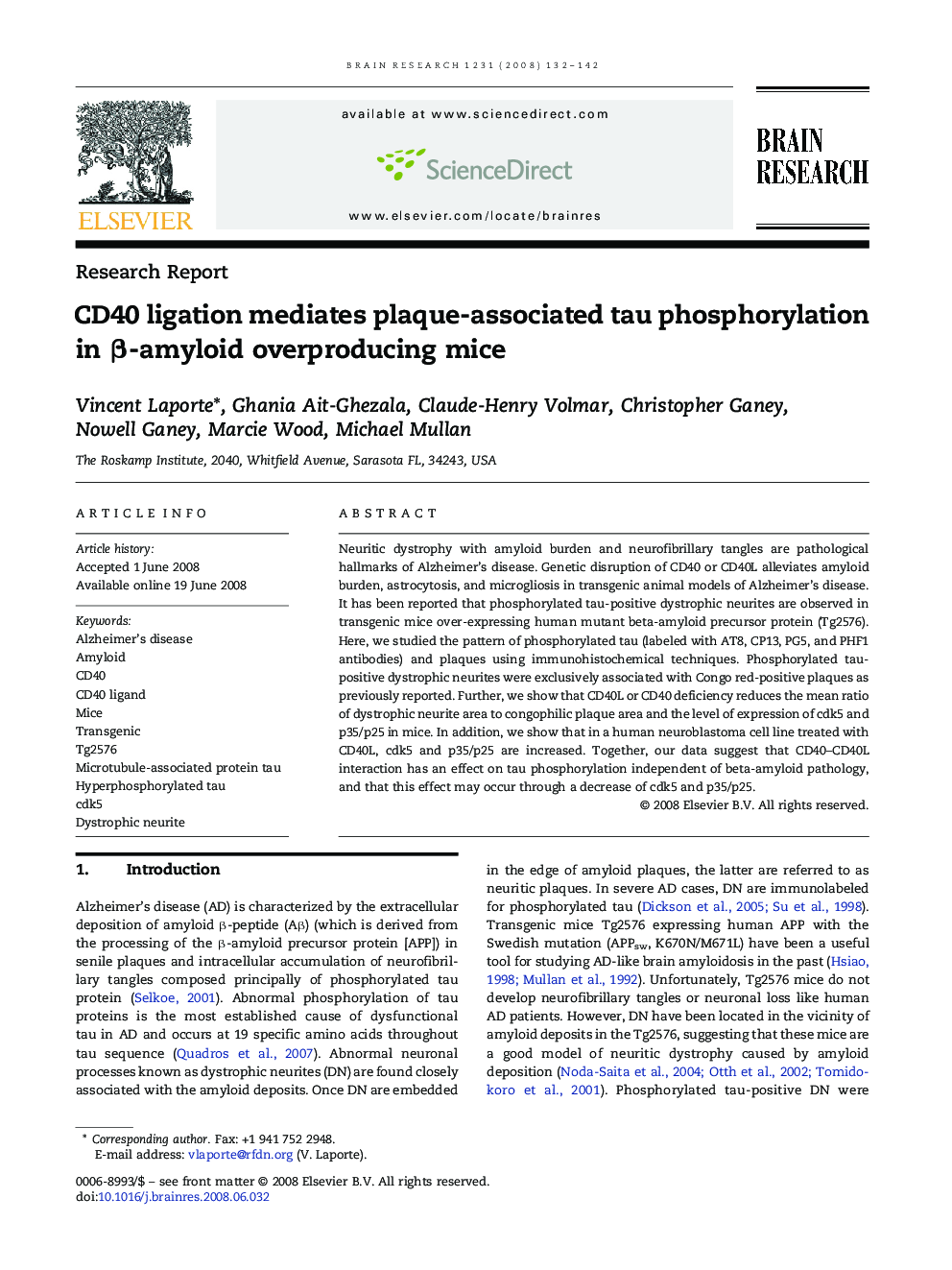| Article ID | Journal | Published Year | Pages | File Type |
|---|---|---|---|---|
| 4329124 | Brain Research | 2008 | 11 Pages |
Neuritic dystrophy with amyloid burden and neurofibrillary tangles are pathological hallmarks of Alzheimer's disease. Genetic disruption of CD40 or CD40L alleviates amyloid burden, astrocytosis, and microgliosis in transgenic animal models of Alzheimer's disease. It has been reported that phosphorylated tau-positive dystrophic neurites are observed in transgenic mice over-expressing human mutant beta-amyloid precursor protein (Tg2576). Here, we studied the pattern of phosphorylated tau (labeled with AT8, CP13, PG5, and PHF1 antibodies) and plaques using immunohistochemical techniques. Phosphorylated tau-positive dystrophic neurites were exclusively associated with Congo red-positive plaques as previously reported. Further, we show that CD40L or CD40 deficiency reduces the mean ratio of dystrophic neurite area to congophilic plaque area and the level of expression of cdk5 and p35/p25 in mice. In addition, we show that in a human neuroblastoma cell line treated with CD40L, cdk5 and p35/p25 are increased. Together, our data suggest that CD40–CD40L interaction has an effect on tau phosphorylation independent of beta-amyloid pathology, and that this effect may occur through a decrease of cdk5 and p35/p25.
